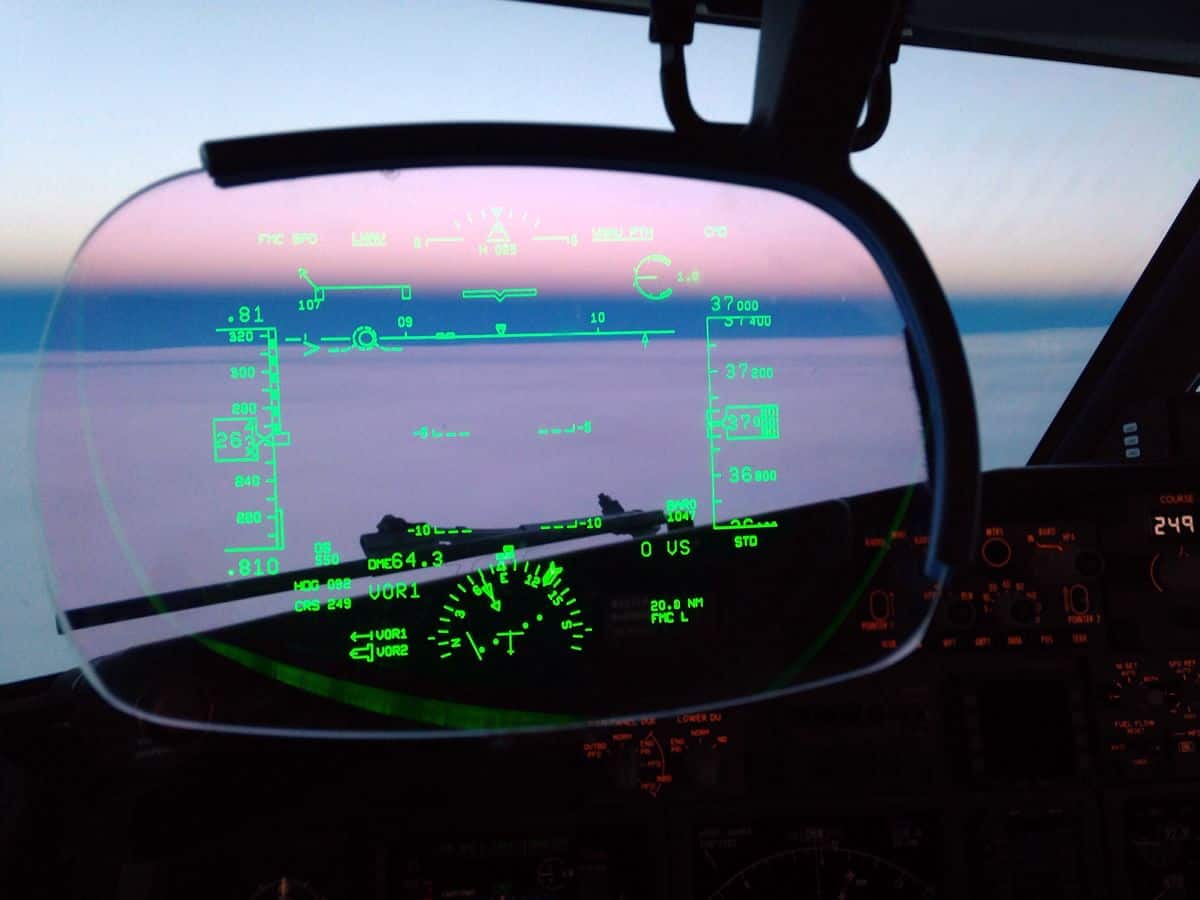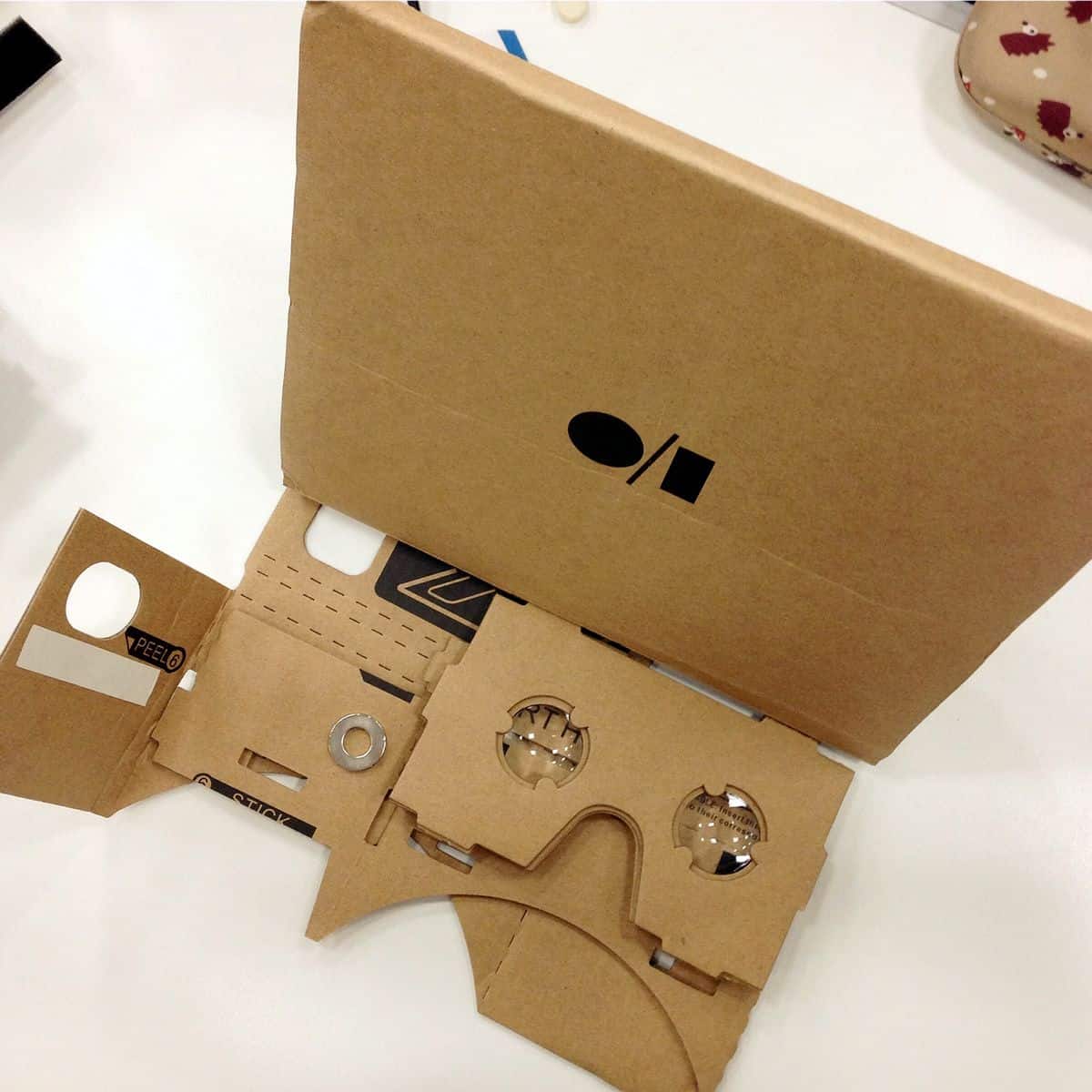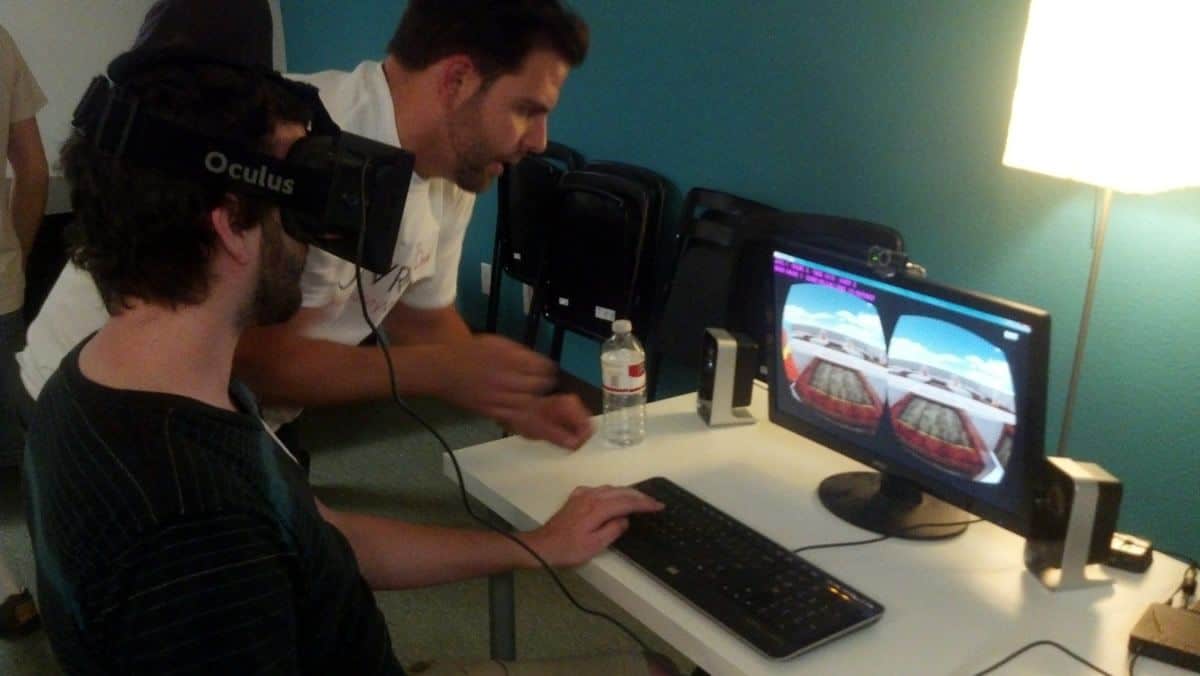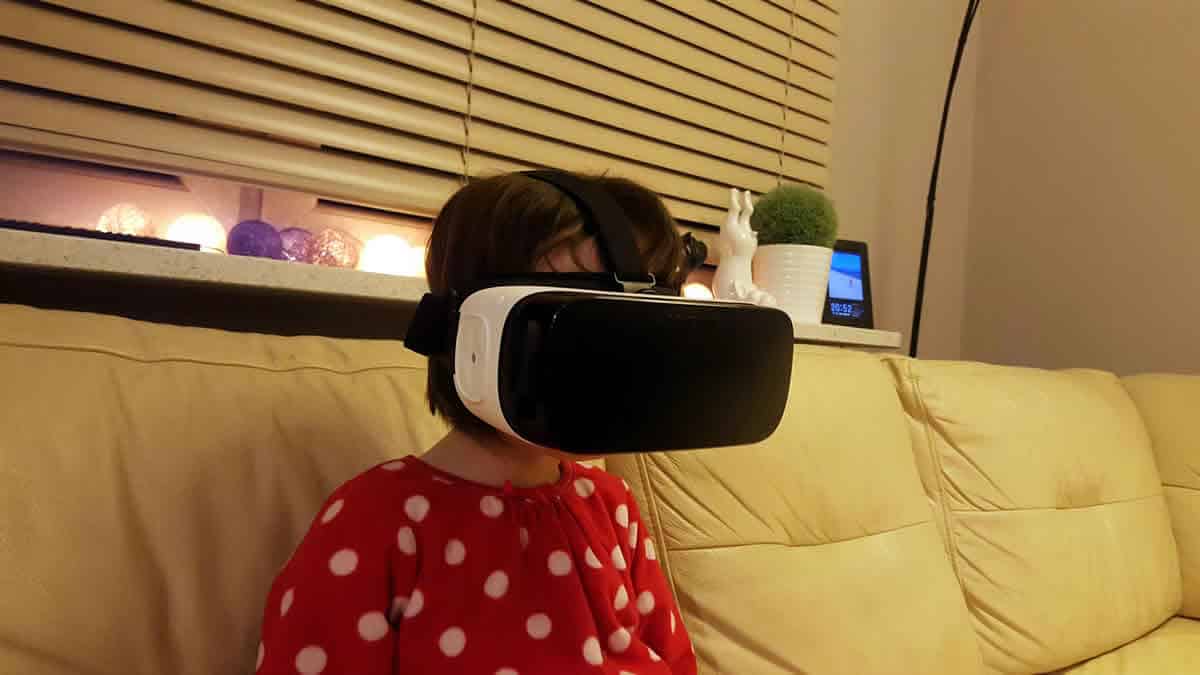There are many hands responsible for shaping the future, but for our dollar, UX/UI designers are the architects of the world yet to come. From designing rich virtual reality worlds to augmenting the reality of “meatspace,” here are four reasons all UI and UX designers need to think beyond the screen, and into the sci-fi future of virtual and augmented reality.
1. UX designers shouldn’t write virtual and augmented reality off as a passing craze.
It may be tempting for UI and UX designers to avoid becoming too deeply invested in virtual reality and augmented reality technology for fear that they’re mere fads. After all, when you see somebody wearing a giant, clunky Oculus Rift or Samsung Gear VR headset, it’s hard to imagine either cranial accessory catching on in a big way.
On the augmented reality sign of things, a lot of tech that originally seemed promising fell flat on its face — speaking of faces, actually, Google Glass is a great example. While it never threatened to replace anyone’s Ray-Bans in the world of cool eyewear, Glass looked relatively sleek for such a cutting-edge product (unlike a VR headset), and many of us were excited for a future of walking around with a futuristic set of frames and a 24/7 heads up display ushering us into the cyberpunk future we’d always dreamed of.
Well, with Google Glass, we were a few electric sheep short of an android’s dream. Plagued by bugs, abysmal battery life and more than a few marketing and PR SNAFUs, Google’s high profile foray into wearable augmented reality was more or less dead on arrival, though their website has been hinting at a second coming of sorts with the cryptic phrase, “The journey doesn’t end here.”
Anatomy of a Paradigm Shift
But one failed product — or even several — does not spell the end of a technological movement. While it’s hard to imagine bedtime browsing, business meetings and even retail technology without the assistance of iPad tablet technology, it’s easy to forget that tablet computing predated the iPad by over two decades. For every industry disrupting gadget or paradigm, there are often countless failed or simply under-the-radar devices in their wake.
Take a look at virtual reality. 90s kids the Internet over probably remember the many failed VR attempts of everyone’s favorite nostalgic decade. Perhaps the most egregious offender was the Virtual Boy, Nintendo’s second lowest selling platform and one of the best ways to crush a child’s dreams in 1995. Far from making kids (and grownups) feel like they were let loose in their favorite video game worlds, the Virtual Boy’s monochromatic red graphics were as visually underwhelming as they were migraine-inducing, and only a few minutes of play would leave your head and stomach reeling. Talk about poor UX design.
The postdrome of the 90s virtual reality disasters hadn’t completely settled by the time Oculus VR started shipping developer kits in 2012, but even the beta headsets blew away expectations while clearing the way for a new crop of virtual reality hopefuls to get in on the three-dimensional, submersive action.
While the Oculus Rift is far from what one might call “comfortable” compared to, say, a hat crocheted for you by your grandmother, it makes up in jaw-dropping wonder what it lacks in cushiness — and it’s miles more plush than any of its predecessors. The graphics are pretty darn impressive, and you can explore virtual environments for extended periods of time without having to reach for a bottle of Dramamine afterward.
What’s Next for Virtual and Augmented Reality?
While Oculus paved the way for virtual reality headsets of the future, followed closely by the likes of Samsung (and its Gear VR — powered by Oculus, by the way), Sony (and PlayStation VR), HTC (and Vive) and even Google Cardboard, augmented reality has had its own renaissance despite the rise and abrupt fall of Google Glass. From bringing Nintendo environments alive on your coffee table to making Disney characters literally pop out of the page of a coloring book, augmented reality apps have been adding fun layers of fantasy to the everyday world without hulking facewear. Even Snapchat and Yelp have gotten in on the game, with real-time face swapping and a heads-up restaurant review display, respectively.
While augmented reality apps are already thriving in the Android and iOS ecosystems right on our smartphones and tablets, AR is currently about to explode into the boundaries of science fiction. While we don’t want to speak too soon, the Microsoft HoloLens looks veritably droolworthy if, like us here at Proto.io, you’re crazy about new and emerging tech (particularly tech that blows open the possibilities of what can be done with a user interface).
Regardless of how you feel about the Windows 10 UI, it’s hard to deny that it looks pretty sharp hovering in front of your kitchen cabinet (especially if you were looking to replace those old cabinets, anyway). Too many icons on your desktop? When your interface is essentially superimposed on your entire living room, you have much more real estate to work with.
UX designers take note: the sky’s the limit when it comes to potential uses for technology like this, and the implications for your design process. Given the current momentum of both movements, studying virtual and augmented reality may be the key to “future-proofing” UI and UX designers. Not only will you be learning the tools with which you carve the user experiences of tomorrow, but you’ll also be learning how virtual and augmented reality designers are already changing the way we interact with our devices, from smartphones to desktop computers, whether we’re projecting them onto the world around us or moving from the world around us into completely bespoke, digitally created universes.
2. Virtual and augmented reality are adding a new dimension — literally — to already innovative mobile app categories.
Of course we love bleeding edge innovation — we’re a prototyping company. Anything that strains the boundaries of what’s possible in technology is fodder for our late-night obsessions and internal all-staff emails (with plenty of exclamation points). Virtual and augmented reality are taking the coolest of the cool in mobile app technology and making them cooler still.
For example, remember when we wrote about three fitness app ideas that don’t exist yet, but should? (If not, open the article in a new tab. We’ll wait!) We mentioned how cool it would be to be able to level up in an MMORPG like World of Warcraft or Star Wars: Knights of the Old Republic by tracking your real-life workouts in meatspace using something like a Fitbit. Clearly we’re not the only gamers who love our cardio, because a company called Virtuix has developed a treadmill to be used with virtual reality headsets. The pre-order will set you back a cool $700 and we’re still a little scared of toppling off of the thing, but that’s not the only way virtual and augmented reality are trying to make getting fit a bit more fun for the gaming crowd.
If you prefer a more full-body workout and a smaller investment, this virtual reality rowing simulator will transform your musty corner of the gym into a beautiful body of water — or even space. For an even smaller investment, no headgear required (besides, perhaps, your favorite set of headphones), there’s the augmented reality game Pokemon Go.
Pokemon Go: Augmented Reality Steeped in 90s Nostalgia
Back to every millennial’s favorite decade: Pokemon Go takes the original three Pokemon games (Red, Blue, and Yellow, back when the world was simple and there were only 151 pocket monsters to choose from) and superimposes it on the world of meatspace. With gameplay very similar to that of Ingress (which we talked about a little here), Pokemon Go will encourage users to go outside and explore the world around them by hiding Pokemon in various geographic coordinates. Smartphone in hand, Pokemon trainers, can track down these creatures, battle them and, of course, collect ’em — gotta catch ’em all!
This isn’t Pokemon’s first foray into fusing the game’s digital world with the outside world. Back in 2011, players of Pokemon HeartGold or SoulSilver could purchase a Pokewalker. This pedometer could help you level up your Pokemon by being physically active and taking plenty of steps. The best part? At the time, the Pokewalker was the most accurate pedometer on the market.
Running out of ideas? Look outside the box — literally.
But fitness apps are indeed not the only innovative app category we’ll see get the virtual and augmented reality treatment. Virtually any application you can think of, from seemingly simple utility apps like calendars and notes to radio and other audio apps, can be experienced in all three dimensions with VR and AR. Even Netflix is way cooler once you slip on a virtual reality headset. With the Gear VR, you can turn your Samsung smartphone into a giant TV screen and your room into a beautiful home theater, then binge-watch Orange is the New Black or Jessica Jones.
This is, of course, manna from heaven for UX designers who get caught in a creative rut (psst! if that sounds like you, we’ve written at length about how to find unique mobile app ideas and UI design inspiration). Let’s say you make educational or training apps, for example. Virtual and augmented reality offer unlimited opportunity for innovative learning. Why spend all night in your anatomy and physiology textbook when you can explore and learn about a three-dimensional human body in Anatomyou VR? You can teach children about the solar system using a telescope, but then you can have them fly through the actual Milky Way in Titans of Space, where they’ll get a sense of the awe-inspiring scale of space.
What also excites us is how virtual and augmented reality will transform social networking. Currently, apps like Oculus Social and AltspaceVR bring brand new perspective to the “chat room,” allowing you to choose a 3D avatar and move around a virtual space, interacting with other VR users while watching videos or browsing the Internet together.
3. Virtual and augmented reality companies are trying to make things easier for UX designers and developers — in other words, they want you.
If there were no other reason for UX designers and developers to jump on the virtual and augmented reality bandwagon, there’s the fact that the makers of these platforms really, really want you to start learning the technology and developing apps. After all, nobody gets excited over an empty ecosystem (as some companies have learned the hard way — fly with the angels, Windows Phone).
Want to start designing and developing for Microsoft HoloLens? You can access the developer toolkit, including downloads and documentation, here. If you’re chomping at the bit to create games and experiences for the Oculus Rift, stop by their developer page, take a self-paced course on Oculus Rift Development at Udemy and even read up on the Oculus subreddit in your spare time.
4. If nothing else, virtual and augmented reality are just super fun to play with.
Not convinced yet? Even if you’re not completely sold on the idea that virtual and augmented reality are the paradigms of the not-so-distant future or the idea that all UX designers need to immerse themselves in 3D audio and visual design, you should at least get your hands on a virtual reality headset and start exploring some of the innovative experiences other designers are creating. If it’s your first time in the hot seat, we defy you not to feel like a little kid all over again.
With virtual reality, you can transform your Aeron chair into the cockpit of a spaceship (alternatively, you can swing from vine to vine in a fantasy environment of floating islands, if that’s more your speed). You may be in your 30s, 40s, 50s or beyond, but that doesn’t mean that you can’t enjoy playtime — and the capabilities of virtual and augmented reality are only as limited as the imaginations of the UX designers who dream them.
UX Designers: What Gets You Most Pumped About Virtual and Augmented Reality?
We want to hear from you: what do you think today’s UI and UX designers can learn from virtual and augmented reality? What apps are you most excited about? What do you hope is on the horizon? Let us know by tweeting us @Protoio!











